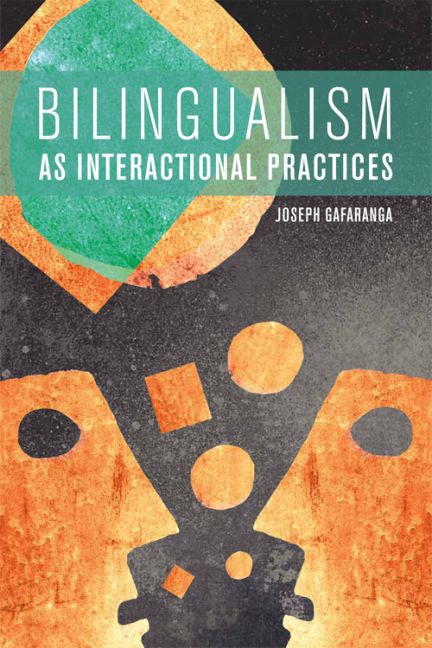Book contents
- Frontmatter
- Contents
- List of illustrations
- Acknowledgements
- Transcription conventions
- 1 Introduction
- 2 The rehabilitation of code-switching
- 3 An inductive perspective on bilingualism as interactional practices
- 4 Language choice and speech representation in bilingual interaction
- 5 Language choice and conversational repair in bilingual interaction
- 6 Language choice and appositive structures in written texts in Rwanda
- 7 Summary and conclusion
- References
- Index
4 - Language choice and speech representation in bilingual interaction
Published online by Cambridge University Press: 26 April 2017
- Frontmatter
- Contents
- List of illustrations
- Acknowledgements
- Transcription conventions
- 1 Introduction
- 2 The rehabilitation of code-switching
- 3 An inductive perspective on bilingualism as interactional practices
- 4 Language choice and speech representation in bilingual interaction
- 5 Language choice and conversational repair in bilingual interaction
- 6 Language choice and appositive structures in written texts in Rwanda
- 7 Summary and conclusion
- References
- Index
Summary
Introduction
The first bilingual practice we look at is language choice in speech representation in bilingual interaction. A number of scholars, including Gumperz (1982), Auer (1984, 1995), Alvarez-Caccamo (1998) and Alfonzetti (1998) and so on, have noticed that CS frequently occurs in the interactional site of speech representation, also often referred to as direct speech reporting (hereafter DSR). However, despite these frequent sightings, no systematic account of the role of CS in DSR has actually been proposed. To be sure, some suggestions have been made, but none seems to be very satisfactory. On the one hand, scholars such as Gal (1979) and Myers-Scotton (1993b) adopt what is known as the verbatim assumption (Clark and Gerrig, 1990) and maintain that, in DSR, language choice is a mere reproduction of the medium of the ‘original’ utterance. Such a view is easily contradicted by the fact that, among bilingual speakers, the medium of DSR need not be the same as that of the original situation, assuming there indeed was an original situation. An alternative view, which may be termed the ‘contextualisation assumption’ and is adopted by scholars such as Auer (1984, 1995), Alfonzetti (1998), Sebba and Wootton (1998) and so on, is that the role of language choice in DSR is to set ‘off (…) reported speech against its surrounding conversational (often narrative) context’ (Auer, 1995: 119) and therefore that the medium of DSR need not be the same as that of the original medium. It is in this sense that many of these authors use CS in DSR as evidence of the non-directionality of CS. In turn, this account faces a number of problems, including the fact that, in some cases at least, the direction of CS in DSR is meaningful. Therefore, the question of how language choice in DSR works remains entirely open. To address this issue, I begin by describing the diversity observed in DSR at the level of language choice.
Language choice patterns in direct speech reporting Among bilingual speakers, an event, assuming there has been one, may be reported using its original medium. Extract 4.1 takes place among Rwandan friends and they are talking about political events in the period leading up to the 1994 political impasse and the ensuing genocide. In the extract, a speaker reports what some Rwandan politicians would have said and done.
- Type
- Chapter
- Information
- Bilingualism as Interactional Practices , pp. 73 - 94Publisher: Edinburgh University PressPrint publication year: 2017



